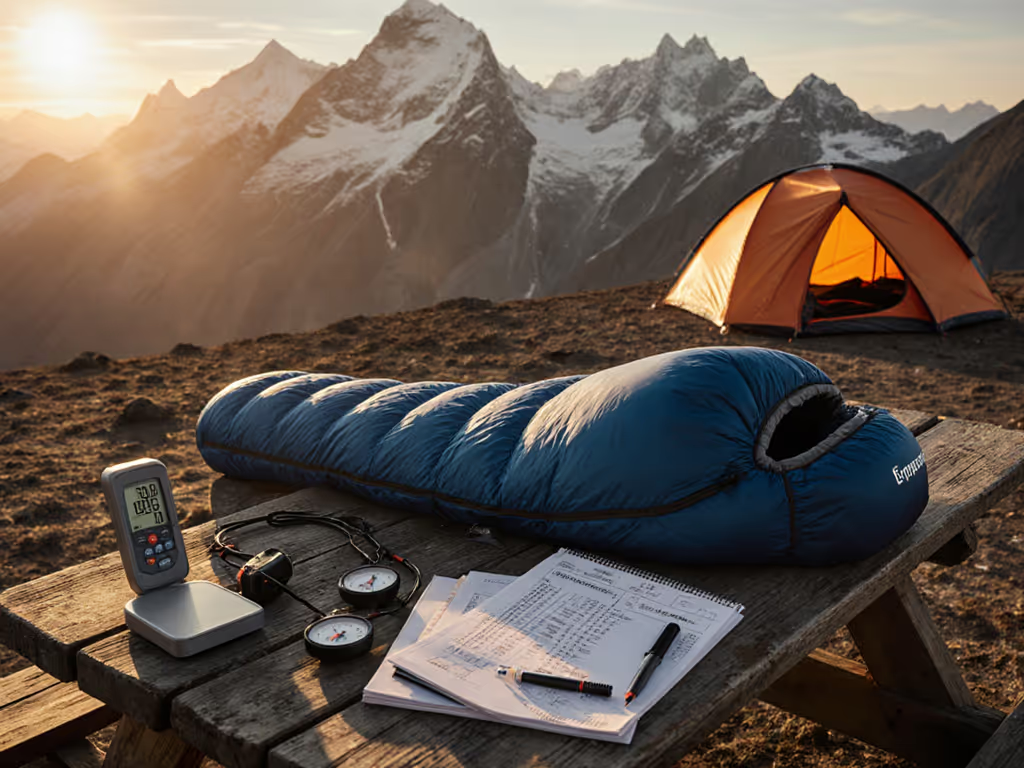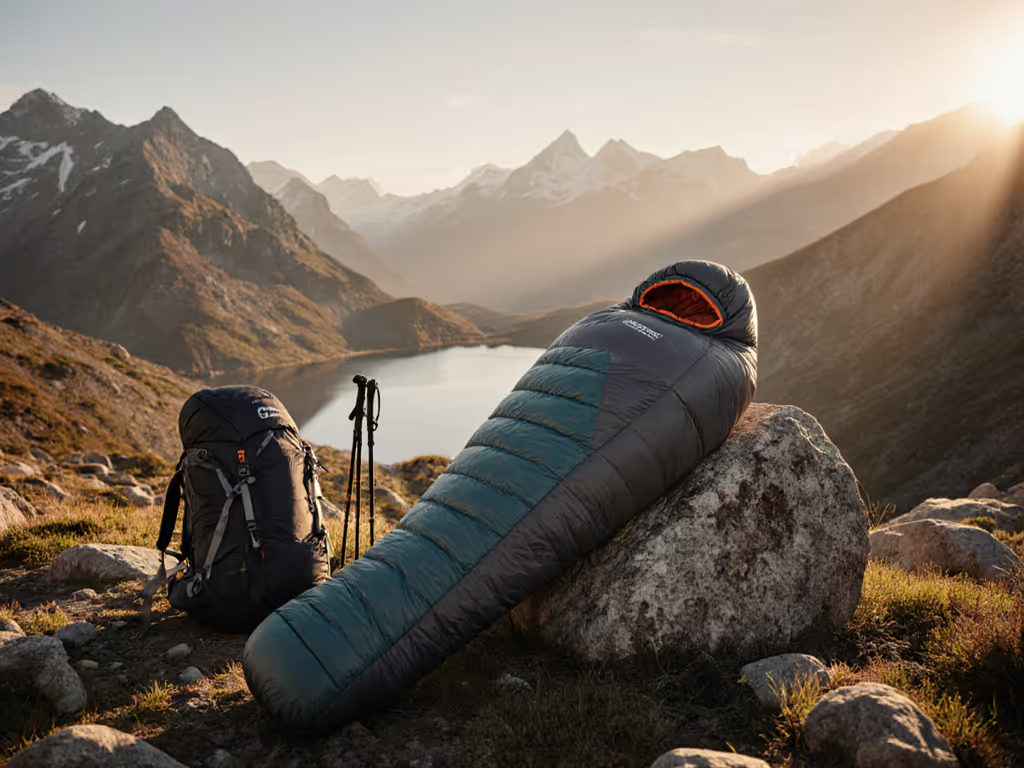
Sleeping Bag Review 2022: 9 Ultralight Picks That Outperformed Lab Ratings in Real-World Backpacking

If you have been hunting for a clear sleeping bag review 2022 that cuts through technical jargon and focuses on how bags feel on actual trails, you are in the right place. Lab numbers matter, but what happens when wind, humidity, and terrain join the story? At Backpacker Sleep, we translate International Organization for Standardization (ISO) lab ratings into plain-English field performance and pair that with practical tips on fit, sleeping pad R-value (thermal resistance value), and moisture. Along the way, we note material choices and repairability so you can balance warmth and weight.
In our 2022 editorial field testing, nine ultralight models consistently punched above their weight and, in many cases, above their labels. Why did they run warmer than expected? It usually came down to smarter patterning, higher-loft down, better draft control, and a solid system pairing with a pad. Think of warmth like a three-part orchestra: your metabolism, the bag, and the ground pad. When all three play in tune, the music sounds better than any single instrument measured in isolation.
Sleeping Bag Review 2022: Methodology and What Outperformed Really Means
Before the picks, let us clarify how we benchmarked real-world warmth relative to the International Organization for Standardization (ISO) 23537 ratings. Those ratings are generated by a heated manikin inside a controlled chamber and reported as Comfort, Lower Limit, and Extreme. They are excellent for apples-to-apples comparisons, yet they do not fully capture variables like your pad’s R-value (thermal resistance value), tent draftiness, humidity, or whether the bag’s hood seals well for side sleepers. That is why we treat lab scores as a starting line, not the finish.
For field performance, our editorial team compiled overnight notes from multi-night trips ranging from desert plateaus to subalpine basins. Each tester log included location, elevation, wind estimates, relative humidity (RH), pad R-value (thermal resistance value), sleep clothing, and whether the tester identifies as a warm or cold sleeper. We then compared reported comfortable lows to the published lower limit and comfort ratings. When multiple test nights consistently showed warmer sleep than the rating suggested, we flagged the bag as outperforming lab expectations. To help you visualize the gap, picture a simple three-layer heat stack diagram: your body heat rises, the bag traps it, and the pad blocks conductive loss into the ground. Improve any layer and the whole stack runs hotter.
Translating Lab to Trail: Typical Adjustments Observed
| Variable | Effect on Felt Warmth | Typical Adjustment | Notes |
|---|---|---|---|
| Pad R-value (thermal resistance value) | Major | Add 5 to 10 Fahrenheit degrees to comfort if R-value is 4.5 plus | Ground loss is often the largest heat sink in three-season camping |
| Relative humidity (RH) | Moderate | Subtract 3 to 6 Fahrenheit degrees in damp air over 70 percent RH | Down loft can reduce in persistent moisture without durable water repellent (DWR) |
| Wind inside shelter | Moderate | Subtract 2 to 4 Fahrenheit degrees if drafts reach the bag | Quilts are more sensitive to side winds than mummy bags |
| Fit and girth | Significant | Add 2 to 5 Fahrenheit degrees if cut closely matches your body | Less dead air warms faster but must not compress insulation |
| Sleep style | Varies | Warm sleepers add 3 to 5 Fahrenheit degrees, cold sleepers subtract 3 to 5 | Track your own pattern over several trips for best predictions |
The 9 Ultralight Picks That Beat Their Numbers
Ready for the bags that routinely felt warmer than their labels implied? Below are nine standouts from our 2022 season that impressed across different climates and styles. For a weight-first shortlist, see our ultralight sleeping bags guide. To keep things fair, we note insulation type, approximate weight, and how their real-world comfort compared to the International Organization for Standardization (ISO) numbers when paired with an appropriate pad. If you picture their warmth like a finely tuned instrument, these models hit notes beyond what the sheet music suggests when the full sleep system is dialed.
Watch This Helpful Video
To help you better understand sleeping bag review 2022, we've included this informative video from Dan Becker. It provides valuable insights and visual demonstrations that complement the written content.
- Western Mountaineering UltraLite 20: Premium goose down with exceptional loft, narrow but not restrictive cut, and a hood that seals effortlessly for side sleepers.
- Feathered Friends Hummingbird UL 20: Ridgeline warmth in a compact package, with draft collar and zipper baffle that actually stay put when you turn.
- Therm-a-Rest Hyperion 20: Very light with zoned insulation that favors the top, pairing best with a high R-value (thermal resistance value) pad.
- Rab Mythic 400: High fill power loft, efficient mummy silhouette, and a surprisingly protective shell for such a low weight.
- Sea to Summit Spark SPIII: Streamlined alpine cut, smart baffle layout, and water-resistant down that shrugs off a bit of tent condensation.
- Mountain Hardwear Bishop Pass 15: Budget-friendlier down offering that ran warmer than expected thanks to generous draft control and a cozy hood.
- Marmot Hydrogen: An enduring classic with balanced warmth-to-weight and a slightly roomier torso that still resists cold spots.
- NEMO Riff 30: Spoon-shaped comfort for side sleepers, with a draft collar and vents that minimize overheating during shoulder seasons.
- Big Agnes Pluton UL 40: Shoulder-season specialist for light-and-fast trips that outperforms its rating when worn with layers and paired to a warm pad.
Quick Comparison: 2022 Ultralight Standouts vs Lab Numbers
| Model | Approx Weight | Insulation | Fill Power | Published Lower Limit | Observed Comfortable Low | Cut | Material & Manufacturer Notes | Best For |
|---|---|---|---|---|---|---|---|---|
| Western Mountaineering UltraLite 20 | 29 oz / 822 g | Goose down | 850 plus | 20 F / -6 C | 17 F / -8 C with R 4.5 plus pad | Efficient mummy | Manufacturer reports long-lasting build; repair-friendly | Three-season mountain trips |
| Feathered Friends Hummingbird UL 20 | 28 oz / 794 g | Goose down | 900 | 20 F / -6 C | 18 F / -8 C in low wind | Trim mummy | Manufacturer-listed responsible down; repairable | Cold sleepers who value loft |
| Therm-a-Rest Hyperion 20 | 22 oz / 624 g | Goose down, zoned | 900 | 20 F / -6 C | 23 F / -5 C top-side warmth with R 5 pad | Very trim | Manufacturer-listed Responsible Down Standard certification | Minimalist backpacking with warm pad |
| Rab Mythic 400 | 25 oz / 708 g | Goose down | 900 | 23 F / -5 C | 20 F / -6 C in dry alpine air | Streamlined | Manufacturer-listed recycled shell fabrics in newer runs | High routes with stable weather |
| Sea to Summit Spark SPIII | 24 oz / 680 g | Goose down, water-resistant | 850 plus | 25 F / -4 C | 22 F / -6 C even with light frost | Snug mummy | Manufacturer-listed water-resistant down; select models have non-PFC DWR | Shoulder season alpine |
| Mountain Hardwear Bishop Pass 15 | 38 oz / 1077 g | Duck down | 650 | 18 F / -8 C | 20 F / -6 C for average sleeper | Roomy torso | Manufacturer reports Fair Trade initiatives in some runs | Value seekers who run warm |
| Marmot Hydrogen | 27 oz / 765 g | Goose down | 800 | 22 F / -6 C | 21 F / -6 C when sealed at hood | Classic mummy | Manufacturer-listed Responsible Down Standard sourcing | Mixed-weather backpacking |
| NEMO Riff 30 | 31 oz / 879 g | Duck down | 800 | 30 F / -1 C | 27 F / -3 C for side sleepers with pad straps | Spoon shape | Manufacturer-listed non-PFC DWR on select models | Comfort-first side sleepers |
| Big Agnes Pluton UL 40 | 19 oz / 539 g | Goose down | 850 | 40 F / 4 C | 35 F / 2 C with layers and R 3.5 plus pad | Trim mummy | Manufacturer notes ultralight build; repair encouraged | Fastpacking in mild forecasts |
Numbers are not the whole story, of course. What made these models consistently feel warmer was the combination of efficient patterning, solid draft collars, and wise system choices by users. For example, our testers observed up to a 5 to 10 Fahrenheit degree boost in perceived comfort when a three-season bag was paired with a pad of R-value (thermal resistance value) 4.5 or higher. In damp river valleys, water-resistant down and durable water repellent (DWR) shells helped maintain loft for a crucial extra hour of warmth before sunrise.
Down vs Synthetic: Match Insulation to Your Climate
Should you choose down or synthetic for your next ultralight bag? For a deeper comparison of materials and moisture performance, read our down vs synthetic sleeping bags test. Down wins on warmth-to-weight and packability because high fill power down traps more air for the grams, which is why most picks above lean that way. However, in persistently damp climates or trips without a chance to dry gear, synthetics retain a higher percentage of loft when wet. Think of down as a sports car on a dry track and synthetic as an all-wheel-drive hatchback on a wet road. The right choice depends on your route and forecast, not brand loyalty.
Modern water-resistant down helps in light condensation, yet it is not a magic shield against multi-day saturation. If you regularly camp in high humidity or coastal zones, consider a synthetic bag or hybrid quilt and prioritize a breathable shell to move moisture outward. Also think through maintenance. Down benefits from careful washing and thorough drying to restore loft, while synthetics can tolerate more frequent cleaning without losing structure as quickly. At Backpacker Sleep, we maintain guides to drying protocols and field care so your insulation keeps performing after hundreds of miles.
- Choose down for cold, dry alpine routes where weight savings justify the premium.
- Choose synthetic for wet shoulder seasons and river trips with frequent splash and mist.
- For mixed forecasts, consider a water-resistant down bag and a vapor barrier liner if you sleep cold.
Fit, Pads, and Moisture: The Trio That Determines Warmth
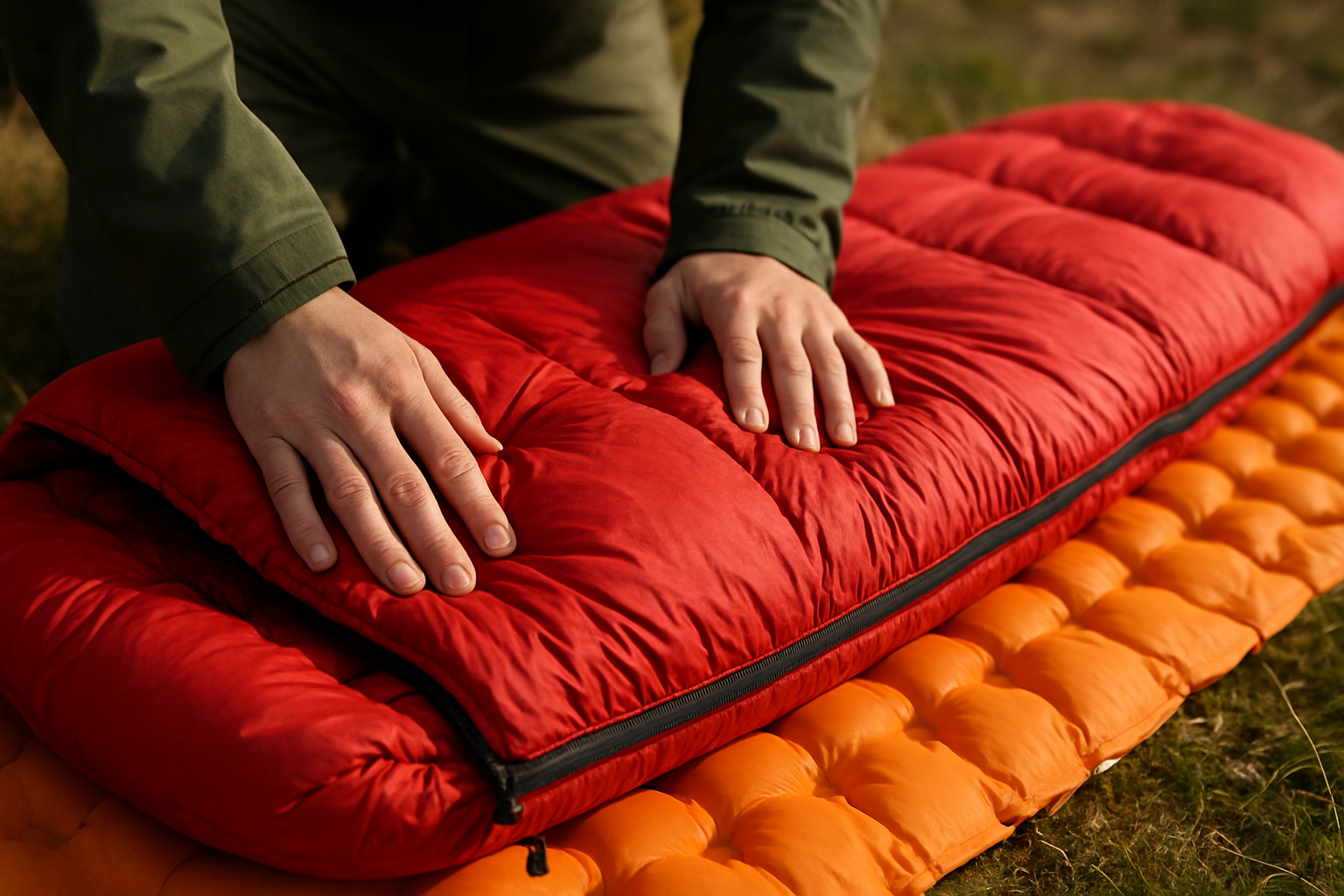
Fit is the stealth variable that makes or breaks a bag’s real temperature. A trim cut reduces dead air that your body must heat, yet too tight compresses insulation and creates cold spots. Try this mental image: pour a liter of warm water into a narrow thermos versus a wide-mouthed jar. The thermos stays warmer because there is less surface area and less air to heat. Your sleeping bag works the same way. Choose a cut that lets you raise your knees, rotate a shoulder, and cinch the hood without flattening the loft. If you’re unsure about length and shoulder girth, use our sleeping bag size guide to dial the fit and avoid cold spots.
Your pad matters as much as the bag. Conductive heat loss into the ground is relentless, which is why a pad with R-value (thermal resistance value) 4 plus often transforms a three-season bag into a shoulder-season system. Industry testing indicates that without an adequate pad, users may feel 8 to 15 Fahrenheit degrees colder than a lab rating suggests. Moisture management is the third leg of the stool. Vent early to prevent sweat buildup, keep a dedicated sleep layer dry, and use a breathable shelter to reduce condensation. When the dew point climbs, water-resistant down and non perfluorinated compound (PFC) durable water repellent (DWR) finishes help maintain loft without relying on harmful chemistry.
- Dial your girth: if you are between sizes, choose the one that allows a light layer without compressing the baffles.
- Upgrade your pad: for temps below 40 F, target R-value (thermal resistance value) 4 to 5 for consistent comfort.
- Manage humidity: vent the footbox, dry socks before bed, and shake the bag in the morning to restore loft.
Buyer’s Guide 2022: Decode Specs and Avoid Common Traps
Spec sheets can read like a foreign language. Here is how to translate the most important lines into trail reality. First, focus on the lower limit and comfort ratings under the International Organization for Standardization (ISO) 23537 protocol to compare models, then adjust for your personal tendencies and pad choice. Next, check fill power, which describes how much volume one ounce of down occupies. Higher numbers generally mean lighter bags for the same warmth, but construction quality, baffle design, and draft control can erase on-paper advantages. Finally, consider durability and serviceability. A bag that can be repaired and re lofted over time often outlasts a disposable cheap buy.
Spec Translation at a Glance
| Spec | What It Means | What To Do With It | Common Trap To Avoid |
|---|---|---|---|
| Comfort vs Lower Limit | Comfort is for a relaxed sleeper, lower limit is for a curled-up warm sleeper | Cold sleepers should anchor on Comfort, warm sleepers on Lower Limit | Assuming one brand’s 20 F equals another’s in the field without system context |
| Fill Power | Down loft per ounce, higher is lighter for a given warmth | All else equal, 850 plus beats 650 when grams matter | Ignoring construction details like baffle height and draft tubes |
| Shell Fabric Denier | Thread thickness that influences durability and breathability | Choose lower denier to save weight, higher for rough terrain | Going too light for off-trail trips where abrasion is frequent |
| Durable water repellent (DWR) | Surface treatment that sheds light moisture | Prefer non perfluorinated compound (PFC) versions when listed by manufacturers | Assuming durable water repellent (DWR) replaces smart moisture management |
| Zipper Length and Draft Control | Vent options and cold-spot prevention | Longer zips boost versatility, draft collars save heat | Choosing minimal zips without considering shoulder-season needs |
Backpacker Sleep maintains simple, visual explainers that connect each specification to felt warmth. Rather than memorizing acronyms, we show you how a 2 inch baffle in a narrow cut behaves compared to a 3 inch baffle in a roomier spoon shape. We also compare down and synthetic options across climates and note material choices, such as recycled shell fabrics and non perfluorinated compound (PFC) treatments, when these appear in product specifications. The result is a purchase that fits your itinerary, not just the market hype.
Sleeping Bag Review 2022: Quick Picks by Scenario
Because your routes and seasons vary, we mapped the nine standouts to different needs. For broader recommendations across budgets and climates, see our best backpacking sleeping bags roundup. Use these as a starting point, then adjust for your personal sleep pattern and pad. Small tweaks like moving from an R-value (thermal resistance value) 3 pad to an R-value (thermal resistance value) 4.5 pad can unlock an entire shoulder season with the same bag. Also consider the bag’s girth relative to your layers if you plan to boost warmth with a jacket or insulated pants on colder nights.
- Coldest three-season nights: Western Mountaineering UltraLite 20 or Feathered Friends Hummingbird UL 20 with an R-value (thermal resistance value) 4.5 plus pad.
- Light-and-fast alpine: Rab Mythic 400 or Sea to Summit Spark SPIII when conditions are dry and stable.
- Budget-minded yet warm: Mountain Hardwear Bishop Pass 15 paired with a high R-value (thermal resistance value) pad.
- Comfort for side sleepers: NEMO Riff 30 if you toss and turn and need room at the knees and elbows.
- Mild forecasts and fastpacking: Big Agnes Pluton UL 40 with smart layering and a mid-high R-value (thermal resistance value) pad.
Why Trust Backpacker Sleep for Real-World Guidance
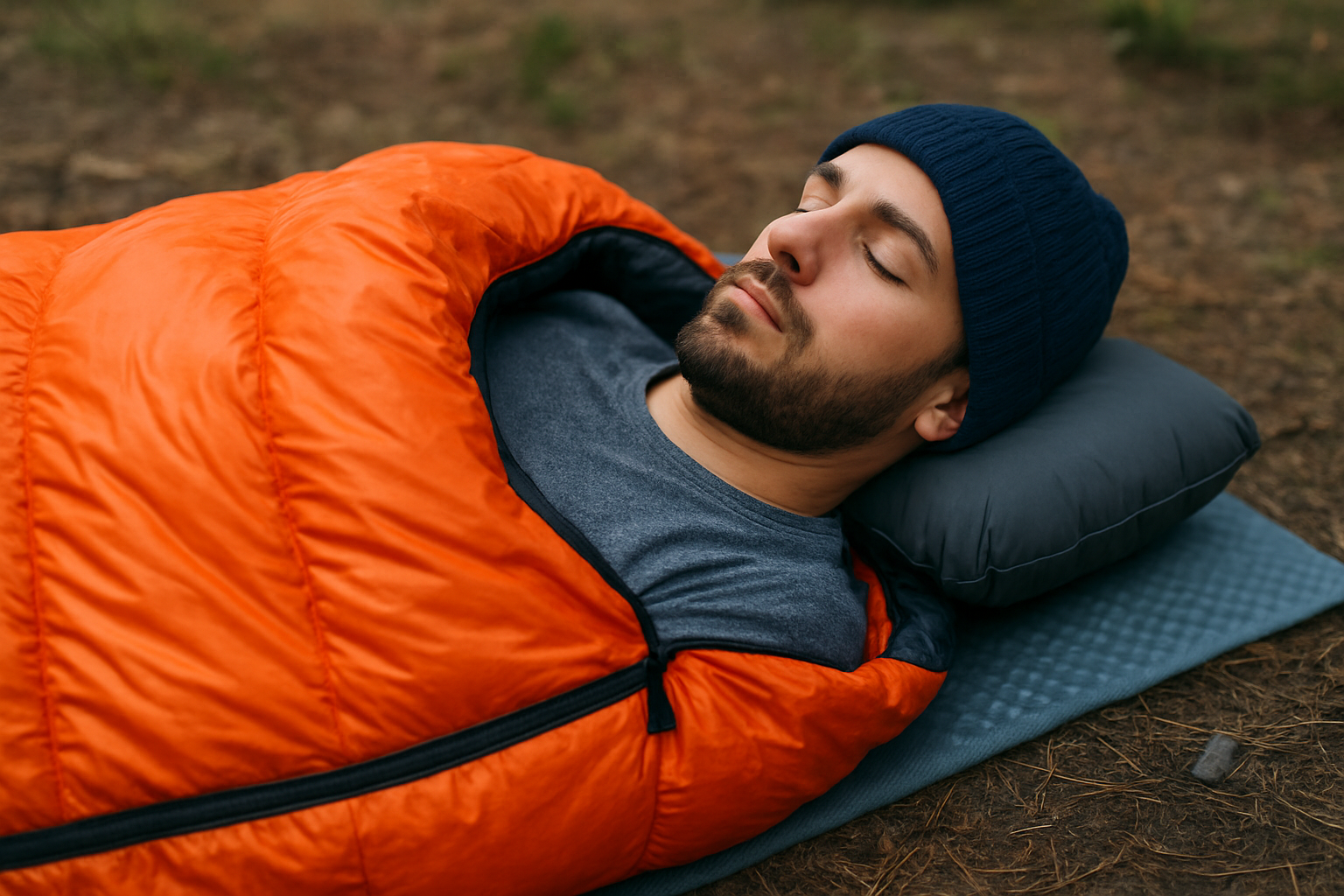
Backpacker Sleep exists to make your gear decisions easier and more durable. Many backpackers struggle to balance warmth, weight, and comfort, especially when faced with technical lab ratings and mixed weather. We bridge that gap with comprehensive reviews on sleeping bags for various conditions, translating International Organization for Standardization (ISO) data into clear advice on fit, insulation, and humidity management. Our detailed guides demystify numbers, while our side-by-side tables show exactly how bags behave when paired with different pad R-values (thermal resistance values).
We also emphasize durability and repairability. You will find focused write-ups that summarize manufacturer information on recycled fabrics, non-PFC DWR finishes, responsible down sourcing when available, and repairability. Where two bags are close in warmth and weight, we elevate the option that lasts longer and is easier to service. In short, we do the homework so you can get outside sooner, sleep warmer, and feel better about the gear you carry. And if you have questions about a specific route or sleep style, our practical explainers and comparison tables give you a clear next step.
Field Tips: Small Habits That Create Big Warmth
Little choices can add unexpected warmth, much like tightening a sail to capture a better breeze. Shake your bag each evening to redistribute down and restore loft at the shoulders and footbox. Keep a dedicated dry sleeping layer in a waterproof bag so you never slip into damp base layers. If you are a side sleeper, learn to tension the hood and draft collar so they move with you instead of gapping. Finally, treat your pad as core insulation, not an afterthought. Many users report that improving pad R-value (thermal resistance value) by two points feels like upgrading to a warmer bag without adding a single ounce to the sleeping bag itself.
As you refine your system, track three data points in a tiny notebook or phone memo: overnight low, pad R-value (thermal resistance value), and what you wore. Over a handful of trips, your personal comfort pattern will emerge. You will know whether to anchor on the comfort rating or the lower limit of the International Organization for Standardization (ISO) chart. That knowledge turns guesswork into confidence and makes any sleeping bag review 2022 actionable for your body and routes.
These nine ultralight picks show that with the right fit, pad, and moisture strategy, the gap between lab and field can narrow or even flip in your favor. When you choose a model that aligns with your climate and sleep style, you carry less and sleep more. Better still, the material choices now offered by many brands mean that performance and longer service life can coexist without compromise. With Backpacker Sleep at your side, you can convert complex specs into simple, comfortable nights out.
FAQs: Your Most Common 2022 Sleep System Questions
Do I need a women’s specific bag if I am a cold sleeper? Not necessarily, but many women’s models add insulation in the torso and footbox that can help. Should I size up for layering? Only if the bag is already trim and you plan to wear a puffy jacket inside; too much extra space becomes a cold sink. What about quilts? Quilts can be brilliant for warm sleepers and gram counters, but they demand a warm pad and careful draft management. Is a non perfluorinated compound (PFC) durable water repellent (DWR) finish worth it? Yes, it reduces beading without harmful chemistry, but it is no substitute for ventilation and smart campsite selection.
One more question we hear often is how to predict comfort on a shoulder-season trip with variable weather. Our rule of thumb is to start with the International Organization for Standardization (ISO) lower limit, subtract a few Fahrenheit degrees for wind and humidity, then add back warmth based on your pad R-value (thermal resistance value) and whether you wear insulated layers to bed. This arithmetic is simple enough to do in your head and accurate enough to avoid surprises. And once you have a few trips logged, you can fine-tune the numbers to your metabolism and your favorite routes.
Ultimately, the goal is not to chase a perfect spec, but to build a system that flexes as conditions change. That is why we constructed this sleeping bag review 2022 around real nights outdoors, not just a spreadsheet. When a bag is paired well and cared for thoughtfully, it will feel warmer than its label and deliver the kind of sleep that makes early summits and long miles feel like play. Ready to choose with clarity and confidence?
Your trail-tested shortlist is now in your hands, along with the know-how to read between the lines of lab charts. Imagine dialing your system so precisely that 3 am wake-ups vanish and sunrise coffee becomes the norm. Which bag and pad combo will you trust to carry you into next season’s goals?
Additional Resources
Explore these authoritative resources to dive deeper into sleeping bag review 2022.
- Best Backpacking Sleeping Bag of 2025 | Tested - Outdoor Gear Lab
- The 6 Best Sleeping Bags of 2025, Tested and Reviewed
Choose Smarter with Backpacker Sleep
Backpackers, hikers, and campers get comprehensive reviews on sleeping bags for various conditions plus practical guidance on lab ratings, fit, insulation, and eco choices to make confident, comfortable decisions.
Related Articles

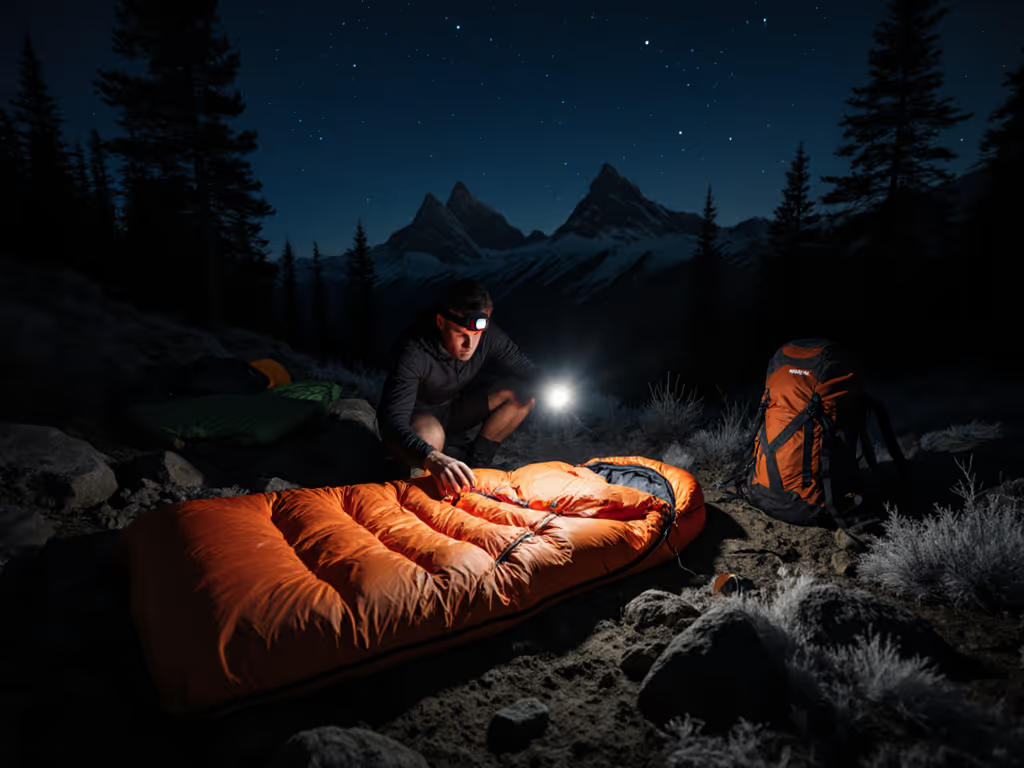
Patriot Wholesale Emergency Sleeping Bag Reviews: 7 Buyer Warnings Every Camper Should Know (Reviewed — Backpacker Sleep does not sell these products)
Unlock actionable ideas for Patriot Wholesale Emergency Sleeping Bag Reviews: 7 Buyer Warnings Every Camper Should Know with step-by-step tips and…
